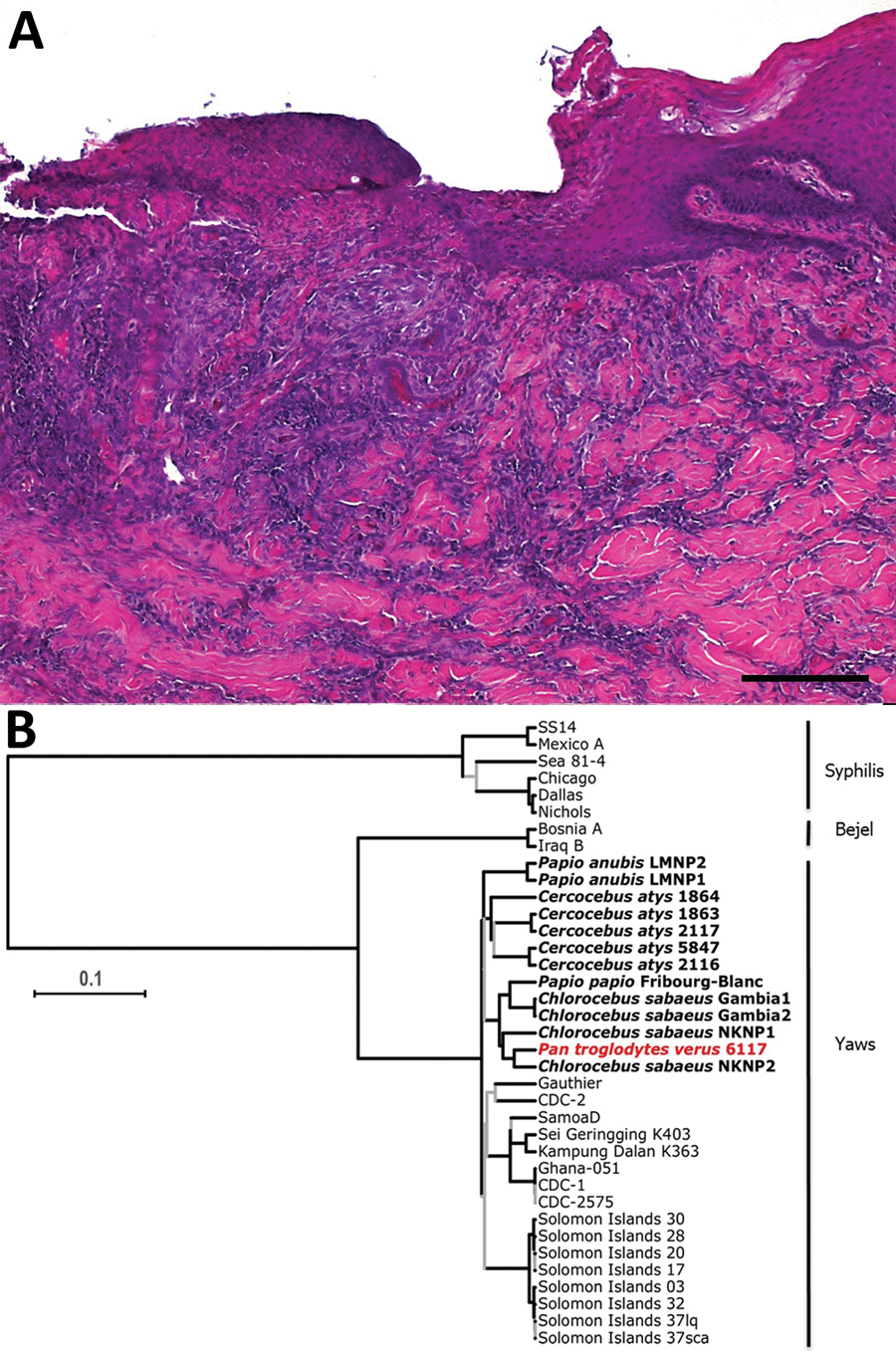Volume 26, Number 6—June 2020
Dispatch
Yaws Disease Caused by Treponema pallidum subspecies pertenue in Wild Chimpanzee, Guinea, 2019
Figure 2

Figure 2. Histopathologic analysis of yaws-like lesions in a wild chimpanzee, Guinea, and phylogenetic placement of the Treponema pallidum subspecies pertenue strain. A) Histopathologic evidence suggestive of a treponemal infection. Shown here is superficial ulcerative pyogranulomatous dermatitis including formation of a mixed inflammatory cell infiltration, predominantly neutrophil granulocytes. Deeper dermal layers show the formation of a perivascular lymphocytic inflammatory cell infiltrate, focal folliculitis, and perifolliculitis. Skin areas adjacent to ulcerated parts show irregular epidermal hyperplasia, consistent with treponemal infections. The ulcerated areas were covered by a serocellular crust. Scale bar indicates 200 μm. B) Maximum clade credibility tree of T. pallidum strain genomes. Red indicates the chimpanzee genome generated in this study. All simian-infecting strains are shown in bold with labels showing the species of nonhuman primate, and the diseases caused by each type of bacteria are shown at right. Branches supported by posterior probabilities <0.95 in the Bayesian Markov chain Monte Carlo tree are indicated in gray. Scale bar indicates nucleotide substitutions per variable site.
1These authors contributed equally to this article.